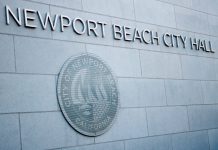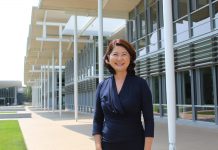Newport Beach City Council discussed the citywide Urban Forest Maintenance Program with city staff and residents during a study session on Tuesday.
The general consensus was to look into possibly increasing reforestation efforts, consider allocating more funds for the tree replacement budget, and review policies with Parks, Beaches and Recreation.
“It’s a big resource and asset for the city,” said Mayor Keith Curry. “I think that we should accelerate the work that we are doing there.”
Parks and Trees Superintendent Dan Sereno gave a presentation during the discussion, explaining the budget, city policies and ordinances, problems they face, tree maintenance schedule, and related issues.
There are approximately 33,751 public trees, comprised of 315 varieties, according to Sereno. The trees have a total value of about $76 million, according to staff.
Currently, there are more than 8,000 vacant sites where trees could be planted.
They remove between 100 and 300 trees every year, depending on the health of the urban forest. They plant around the same amount, depending on number of citizen requests and funding availability.
Councilman Mike Henn would like to see a plan go beyond the necessary tree replacements and really make a dent in the denuded areas. According to a quick and rough estimation Henn made, it would take about 194 years to replace all of the trees in the city that need it at the current rate.
Budgets include $1.15 million for professional technical services like trimming, spraying, injecting, removals, etc., $135,000 for reforestation, $60,000 for the annual trimming of ficus trees, and $30,000 to mitigate tree claims.
Problems include birds, pests, decay, and disease. They also have challenges with development pressures, from both the public and private sides.
The wrong tree in the wrong place can also cause issues, Sereno pointed out. Large trees with extended root systems can create problems in smaller, more compact areas, he said. Smaller parkways can’t support large trees.
“We’ll endeavor to plant the right tree,” in the right spot, Sereno said. “Will we make some mistakes? Absolutely. But we’re going to endeavor not to make the same mistakes that were made 50, 60, and 70 years ago, so we don’t have the same issues that we are currently faced with in this city.”
Councilman Rush Hill asked about how the department will prioritize replacing previously removed trees while the city tries to “catch up” on reforestation.
There have been about 10 trees removed in the past few months in his district, Hill concluded, and he has received comments from residents that they aren’t being replaced because of the budget.
There is a standing list of about 100 trees that currently need to be planted, Sereno responded, in order based on budgetary cutbacks.
“We are planting trees back right now, when we remove them, and taking them off the top of the list as well,” Sereno said.
“It seems to me that we’re killing a lot of trees with the amount of paperwork that we’re putting out about taking trees out,” Hill said, suggesting that it could be done electronically.
The department is also working on the street tree designation list, which will designation a species of tree for every block in the city, Sereno explained. Staff is currently revising the list to allow multiple tree choices to residents, based on the size of the parkway and the availability of that tree in a 36-inch box.
In recent years, “there has been more of an acute sense by the community, of the urban forest, and the benefits that it provides, but some of the liabilities it provides as well,” Sereno said, “so we have to balance that.”
During public comment, one resident estimated there were about 100 trees missing within just a few streets in his community. Many from Begonia, Carnation and Avocado avenues, he noted. Some areas are practically denude of trees, he said.
“The budget, I think, is woefully inadequate for the replacement of the trees that need to be done throughout the whole community,” he said, and encouraged the council to look “aggressively” into the issue.
“I don’t think that you’ll ever get caught up,“ with just $135,000, he added.
Lessons have been learned over the years, said Karen Tringali from the Corona del Mar Residents Association, which is encouraging, as well as the fact that the city is actively reforesting with more appropriate tree species.
There are “blocks and blocks” in CdM that are vacant of trees, she said, and asked that city staff and council members make those areas a priority in the future.
“I’ve watched the evolution of the forest with a great deal of interest,” said Bob Shelton. Staff has an “impossible job,” he added.
For more information and the full presentation and discussion, visit newportbeachca.gov or click here.





Why do we keep buying, planting, and killing non-native trees that don’t belong here and obviously don’t survive well here. From what we see in deep root cutting and over-watering maybe we need to take a better look at what works, and stay away from what doesn’t. We pay the smartest folks to take care of our trees, but somethings just aren’t managed right or at all. The forest isn’t working here!!! Use native Southern California trees, be diligently religious about over/under watering, and screw all the naggy HOA’s. You don’t visit Yosemite and enjoy the majestic palm trees or Tuscan olive trees! Come on already this is a broken record!